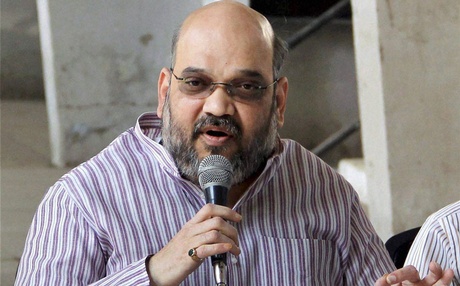When hearsay rules, and national political scene is becoming extension of Gujarat, will next elections be fought on a murder?
Hearsay, these days, seems to have acquired greater validity than truth. Look at the manner in which the CBI has been trying to implicate Gujarat chief minister Narendra Modi and his lieutenant Amit Shah in the Ishrat Jehan encounter case. All it has so far got is specious verbal evidence of an low-rung officer claiming to have heard another senior officer telling a third that “black beard and white beard” had okayed the execution.
The CBI had no problem making a mischievous mention of this bit of first rate hearsay in its chargesheet in the Ishrat case. But it conveniently omitted any mention of the recorded statement of David Coleman Hadley that Ishrat was indeed an LeT operative because that is supposed to have been mere hearsay. Hadley’s statement, recorded by the National Investigating Agency (NIA), would not have undermined the CBI’s basic charge that the encounter was staged. But since the CBI is seeking to build a case that a minorities-unfriendly administration bumped off an innocent college girl, it chose to treat the NIA records as hearsay.
Government agencies are past masters at resorting to hearsay and half-truths when it suits them. But rarely have they influenced the political discourse so much as they are doing now in the Ishrat case. In this context this bit of hearsay about Amit Shah is worth recounting. After he was arrested in the Sohrabuddin fake encounter case by the CBI, Amit Shah was under constant pressure to turn approver and implicate Modi. "Arre bhai aap bania parivar se ho (Look, you are a bania) why are you putting yourself through so much trouble, just name Modi and be done with it" he was constantly nagged by CBI officers. Shah dutifully passed this information to top BJP political bosses.
The principle of “omerta” is as cherished in politics as it is in the underworld. Shah withstood the pressure and has been suitably rewarded by making him the most powerful general secretary in the BJP. He frustrated the CBI’s best and most credible chance of implicating Modi in the Sohrabuddin and Ishrat killings. No wonder the CBI has now discovered a police sub-inspector whose hearsay about Modi will be paraded as evidence.
It would be naive to believe that the CBI is simply investigating the criminality in these encounters. There is enough to suggest that it is working on a political brief--to implicate Modi before 2014 Lok Sabha general elections. In the process, it is allowing one case to set a divisive national political agenda. And for the first time we may see intense polarization on the issue of terrorism instead of common resolve.
Politics is guided by short-term goals and selective amnesia. Few would now recall how the use of the CBI to set the political agenda in 2007 of Gujarat assembly elections recoiled on the Congress. Recall how carefully Modi used the symbol of Shohrabuddin to polarise the electorate on the issue of Islamic terrorism versus Gujarati pride coupled with development. Without transgressing the legal boundary, he communicated through innuendos effectively that the elimination of terrorist is the right recourse for the state. He was cheered all along and voted back with thumping margin.
Can the Ishrat encounter case replicate the Soharbuddin encounter case at the national level? This question would have been dismissed out of hand some time back. But in today’s socio-political milieu, which appears like an extension of Gujarat’s political theatre, the possibility of the Ishrat Jehan encounter taking precedence over all political issues cannot be ruled out. The manner in which the CBI is being used has exposed the basic character of the state as that which borders on criminality irrespective of its political denomination. This is borne out by the fact that Ishrat Jehan was killed in close co-operation with agencies working under the UPA regime at the centre and the BJP regime at the state (though all blame is now sought to be put on the latter).
In fact, there are thousands of cases as gruesome and tragic as Ishrat Jehan’s all across the country that been brushed under carpet by security forces and intelligence agencies. Are you aware of counter anti-terrorist (CAT) operations that are being carried out in insurgency-hit areas? The CATs are state-sponsored operatives who resort to the same methods (in the name of national security) that terrorists do. There are umpteen instances in which IB operatives have neutralized ISI modules by handing over suspects to the state police for extra-judicial execution. What is true of Ishrat Jehan is true to most of the encounters cases ever since the security forces were feted and adored for acquiring their trigger-happy image during the seventies in the Chambal ravines. The state promoted criminalization and dehumanization of the security forces which essentially turned into unfeeling killing machines.
The fact that the Ishrat case finds political resonance across the country is only indicative of this aberration of the state getting acceptance at a wide level. Given the grim security scenario all over the country, the Ishrat Jehan case has potential of polarizing the electorate in an “us versus them” debate. Top BJP leaders have already started attacking the UPA and the CBI for protecting Ishrat Jehan’s benefactors in LeT and implicating Modi and security agencies determined to eliminate terrorism from India. With a deft touch of his demagogy, Modi is capable of turning this issue into a national debate on terror and to his favour. If such a scenario emerges, Congress president Sonia Gandhi and prime minister Manmohan Singh would share substantial blame for polarising the electorate on terrorism by turning a murder case into a national political agenda.

